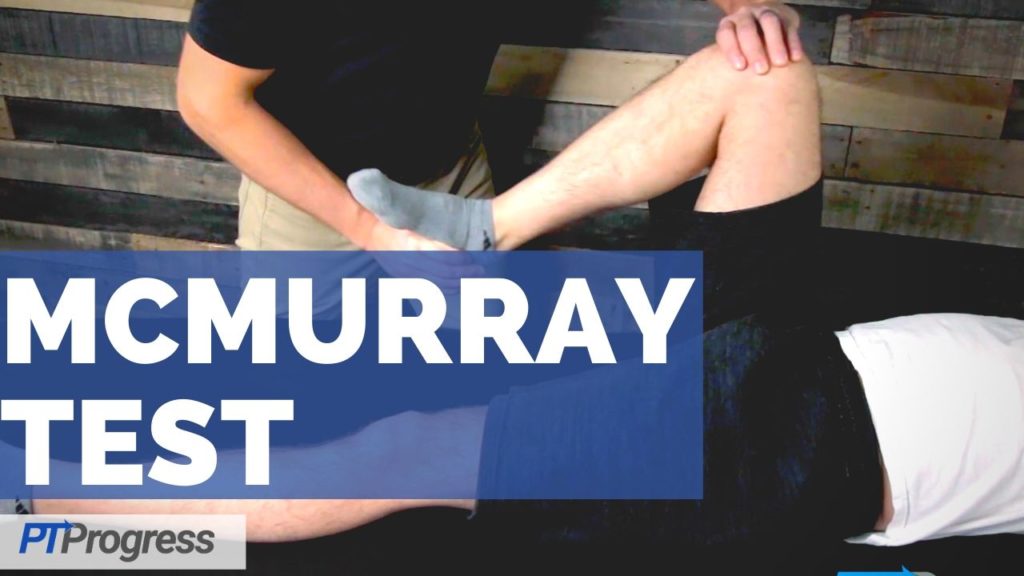
Purpose: The McMurray test is used to assess the integrity of the medial and lateral meniscus, specifically testing for meniscal tears. Meniscal tears are the most common injury to the knee. The McMurray test is commonly performed along with the joint line tenderness test to identify meniscal injury.
How to Perform McMurray Test
Position of Patient: The patient should be relaxed in the supine position with knee completely flexed by the examiner.
Performance: The examiner will hold the knee at the joint line with one hand while holding the foot with the other hand. With the knee fully flexed, the examiner will internally rotate the tibia and extend the knee while applying a varus force at the knee. Pain or a popping sensation indicates a lateral meniscus tear.
To test the medial meniscus, the examiner will place the knee into flexion once again, externally rotate the tibia, and extend the knee while applying a valgus force to the knee. Pain or a popping sensation indicates a medial meniscus tear.
How to Interpret McMurray Test
Positive Finding: A positive test occurs when pain or popping occurs while extending the knee during the McMurray test. Tibial rotation during the McMurray test isolates the medial and lateral meniscus, applying stress to the meniscus with the twisting and extension motion. A torn meniscus may become trapped and pop or click as the knee moves through the range performed during the test.
Test Accuracy / Reliability / Evidence:
Sensitivity: 0.51
Specificity: 0.78
+LR: 2.3
-LR: 0.63
k= 0.16
Source: Ockert B, Haasters F, Polzer H, et al: [Value of the clinical examination in suspected meniscal injuries. A meta-analysis]. Unfallchirurg 2010; 113: pp. 293-299
Source: Dervin GF, Stiell IG, Wells GA, et al: Physicians’ accuracy and interrator reliability for the diagnosis of unstable meniscal tears in patients having osteoarthritis of the knee. Can J Surg 2001; 44: pp. 267-274
McMurray Test Video
The McMurray test is used to assess the integrity of the medial and lateral meniscus, specifically testing for meniscal tears, which is the most common injury to the knee. The McMurray test is commonly used along with the joint line tenderness test to identify meniscal injury.
To perform the McMurray test the patient should be relaxed in a supine position as the examiner firmly supports the knee and the lower leg.
The examiner will hold the patient’s knee at the joint line with one hand while holding the patient’s foot with the other hand. With the knee fully flexed, the examiner will internally rotate the tibia and extend the knee while applying a varus force at the knee. Pain or a popping sensation indicates a lateral meniscal tear.
To test the medial meniscus, the examiner will place the knee into flexion once again, externally rotate the tibia, and extend the knee while applying a valgus force to the knee. Pain or a popping sensation indicates a medial meniscal tear.
Next Article: How to Perform Lachman Test

